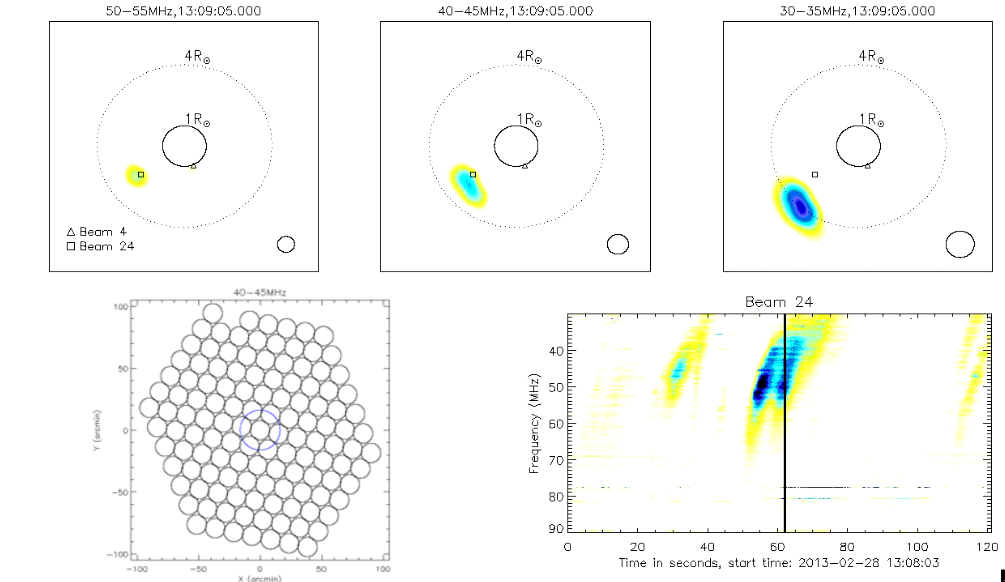Daily Image
19-07-2013Snapshot Imaging and Spectroscopy of the Sun with LOFAR
| Submitter: | Richard Fallows |
| Description: | With the arrival of summer here in the Netherlands, and weather which is providing us with more than the annual requirement of five continuous hours of sunshine, it is good to take a look and see what the Sun looks like through LOFAR. In February we started trialling a "snapshot" imaging mode of the Sun using the multi-beam capabilities of LOFAR. Using the core stations it is possible to form up to approximately 200 Tied-Array Beams which can be formed into concentric "rings" around the central observing direction (lower left picture - blue circle represents the Sun for comparison). These can be used to map out an area of sky, including on and around the Sun and it's corona. The advantage of using this mode to effectively image the Sun is that we can get much higher time resolution than the usual one second with interferometry, though possibly at the cost of some spatial resolution, and that a dynamic spectrum can be formed easily from the data of each tied-array beam. Having the dynamic spectra is particularly useful for identifying the type of radio burst(s) being observed. In this observation we observed a succession of Type-III radio bursts, which are very short duration (a few seconds) bursts commonly associated with flare activity. These can be seen in the dynamic spectrum (lower right image for beam 24) as the bursts progressing rapidly from higher to lower frequency with time as they drift out through the corona. This drifting is illustrated in the top three images which were created from averages over 5 MHz in frequency and a third of a second in time, progressing from 50-55 MHz on the left to 30-35 MHz on the right. The central circle illustrates the Sun's location, the outer circle is a radius of four solar radii from the Sun for illustration purposes, and the small square to the lower left of the Sun illustrates the location of beam 24. |
| Copyright: | Diana Morosan, Trinity College Dublin |
| Tweet |  |
